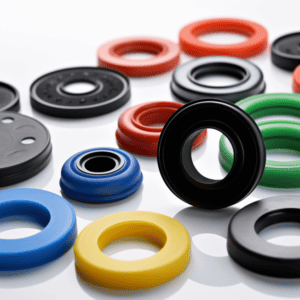Rubber is a versatile material used in countless industries. Have you ever wondered how it works or how it's made? Let's delve into the science behind rubber.
What Makes Rubber Special?
Rubber's unique properties stem from its molecular structure. It consists of long polymer chains that can stretch and return to their original shape. This elasticity is what sets rubber apart.

Natural vs. Synthetic Rubber
Natural rubber comes from the sap of rubber trees. Synthetic rubber, on the other hand, is man-made from petroleum byproducts. Both have similar properties but serve different purposes.
Vulcanization: Enhancing Rubber's Strength
Rubber alone can be quite soft. Vulcanization is a process that adds sulfur to rubber, making it stronger and more durable. This process was discovered by Charles Goodyear in the 19th century.
Rubber Manufacturing Process
- Harvesting: Natural rubber is harvested by tapping rubber trees. The sap is collected and processed.
- Compounding: Rubber is mixed with additives like sulfur and accelerators to improve its properties.
- Molding: The rubber compound is shaped into various forms using molds.
- Vulcanization: Heat and pressure are applied to the molded rubber, activating the vulcanization process.
- Quality Control: Each batch undergoes rigorous testing to ensure it meets industry standards.
Applications Across Industries
Rubber's versatility shines in its applications:
- Automotive: Tires, seals, and hoses rely on rubber's durability.
- Medical: Rubber gloves, tubing, and seals are vital for hygiene and precision.
- Aerospace: Seals and gaskets ensure airtight connections in aircraft.
- Construction: Rubber dampens vibrations in buildings and bridges.
- Electronics: Rubber insulates and protects delicate electronic components.
- Sports: From basketballs to running shoes, rubber enhances athletic gear.
Sustainable Rubber Production
Sustainability is crucial. Sustainable rubber production methods aim to minimize environmental impact and ensure ethical labor practices.
Conclusion:
Rubber's unique properties and the science behind its manufacturing make it indispensable in our modern world. Understanding its versatility and the importance of sustainable practices ensures that rubber continues to benefit industries and society at large.








